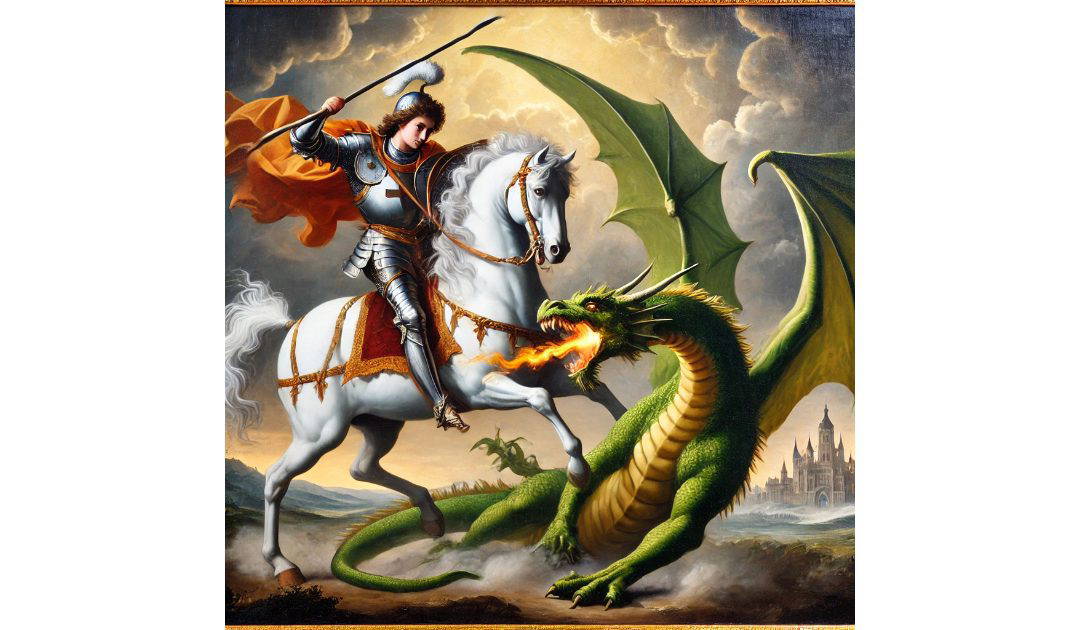The 23rd of April is, of course, Saint George’s Day. It is also the day on which King Edward III founded the Order of the Garter, William Shakespeare’s birthday (1564), and, it is believed, the day he died (1616). On Saint George’s Day in 1516 the Munich Reinheitsgebot took effect in all parts of Bavaria. That is the set of regulations limiting the ingredients in beer.
Saint George is believed to have been a Roman soldier born in Cappadocia, in modern-day Turkey, during the late third century. Raised as a Christian, he served in the Roman army under Emperor Diocletian. However, when the emperor initiated a campaign of persecution against Christians, George staunchly refused to renounce his faith. This act of defiance led to his imprisonment and eventual execution, establishing him as a Christian martyr. His steadfastness in the face of oppression has made him a revered figure in Christian tradition.
The story for which Saint George is best known is undoubtedly the tale of his encounter with the dragon. According to legend, a fearsome dragon terrorized the city of Silene in Libya. To appease the beast, the townsfolk provided it with sheep, and when the livestock ran out, human sacrifices were offered. One day, the lot fell to the king’s daughter.
As the princess awaited her grim fate, Saint George happened upon the scene. Moved by her plight, he confronted the dragon, armed with only his lance and shield. After a fierce battle, he triumphed, slaying the dragon and saving the princess. The grateful townspeople converted to Christianity in gratitude for his bravery. This narrative of heroism and faith has cemented George’s place in cultural lore across the Western world.
Saint George’s legacy is not confined to religious texts or folklore. He is venerated as the patron saint of numerous nations, including England, where his emblematic red cross on a white background has become the national flag. His feast day is marked by various traditions and festivities, especially in England where the day is a celebration of English culture.
Beyond England, Saint George is the patron saint of several other countries such as Georgia, Ethiopia, and Portugal, and many Christian denominations hold him in high esteem. His image can be found in countless churches and artworks, symbolizing virtues of bravery and piety.
In modern culture, Saint George’s story continues to resonate, embodying the timeless struggle between good and evil. His tale is often interpreted as an allegory for the triumph of righteousness over malevolence. The dragon, a universal symbol of chaos and destruction, is vanquished by the hero’s courage and faith.
Moreover, Saint George’s story has been adapted and retold in various contexts, from literature to cinema, demonstrating its enduring appeal. His influence extends into popular culture, where his archetype as a dragon-slayer has inspired countless heroic figures across genres.

